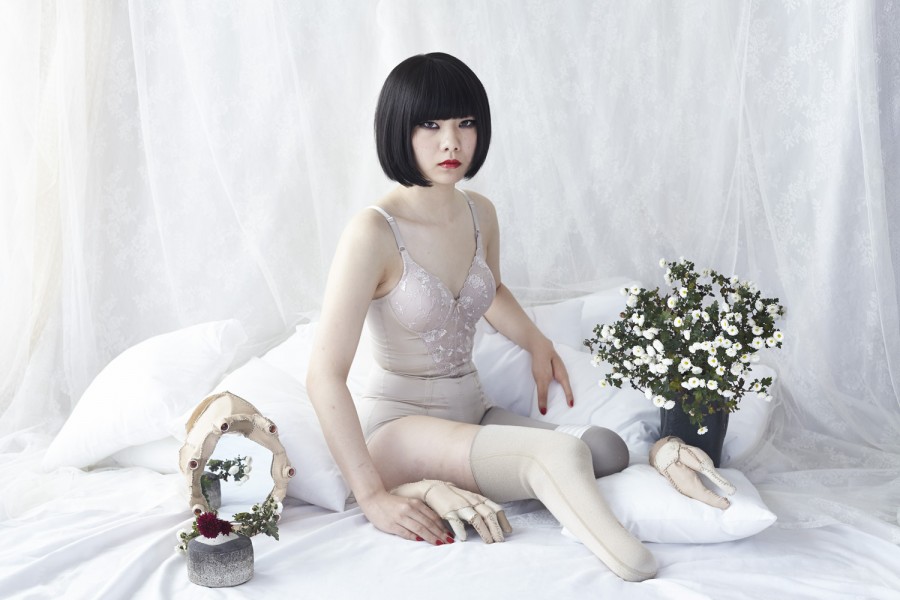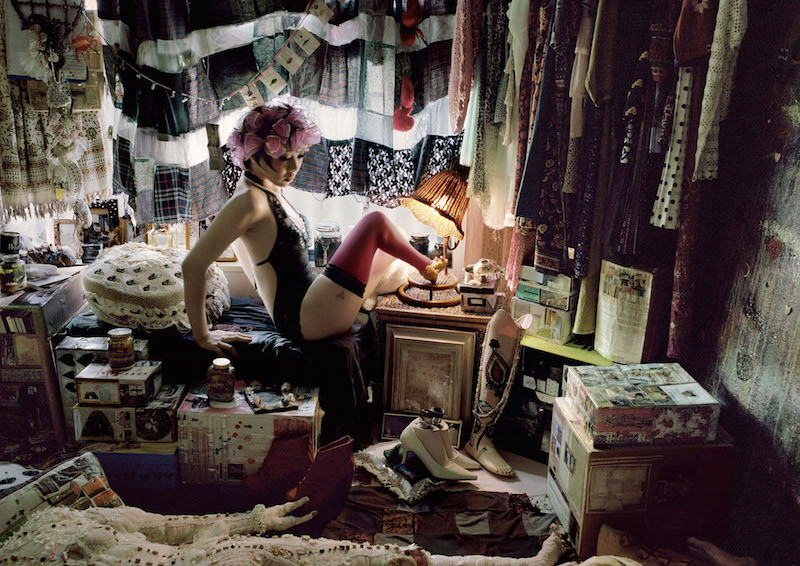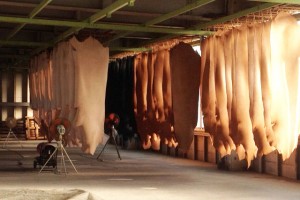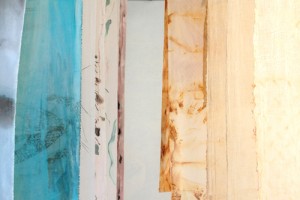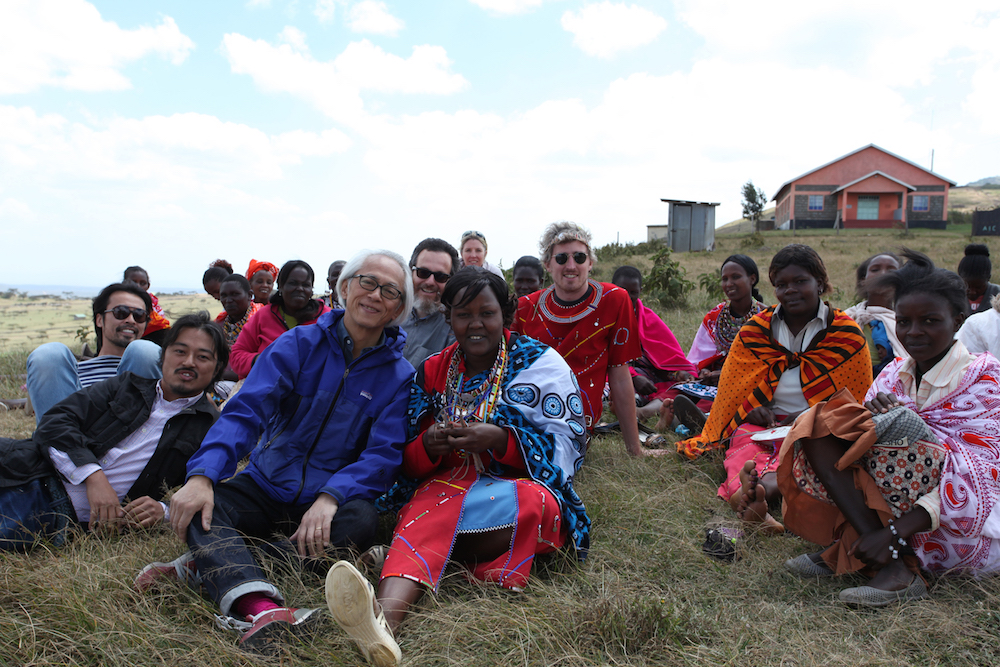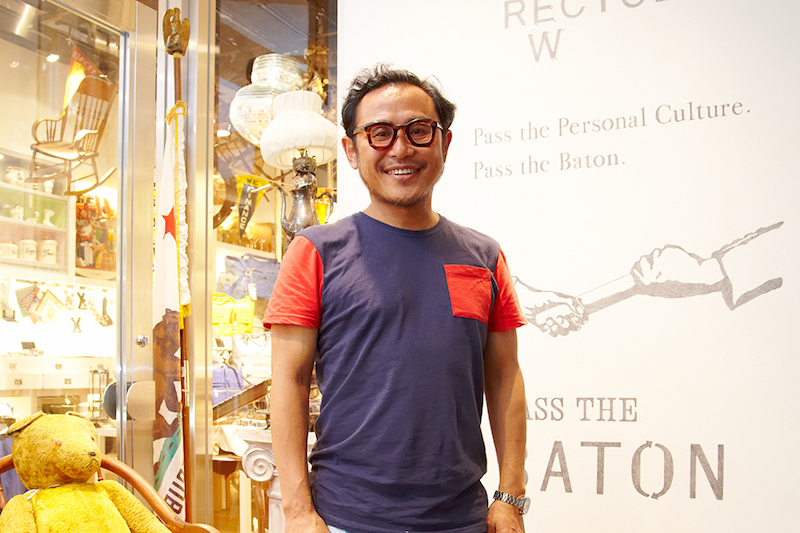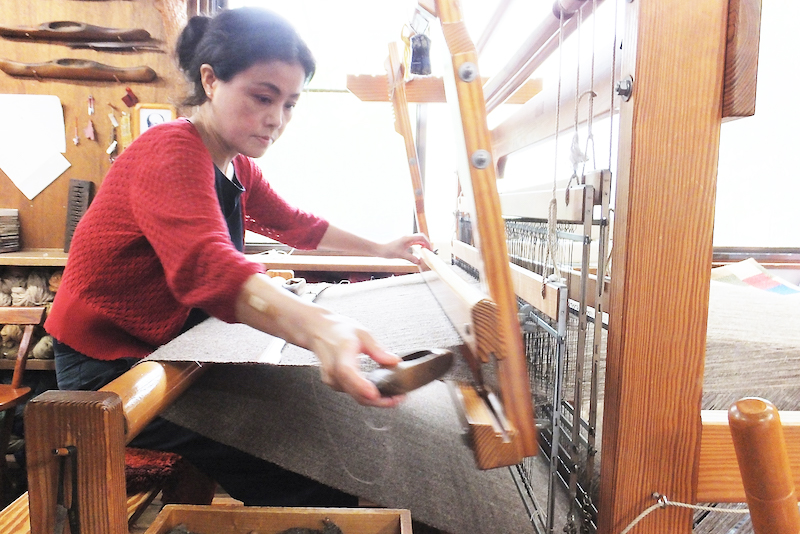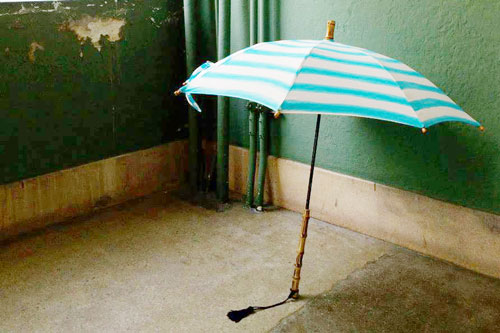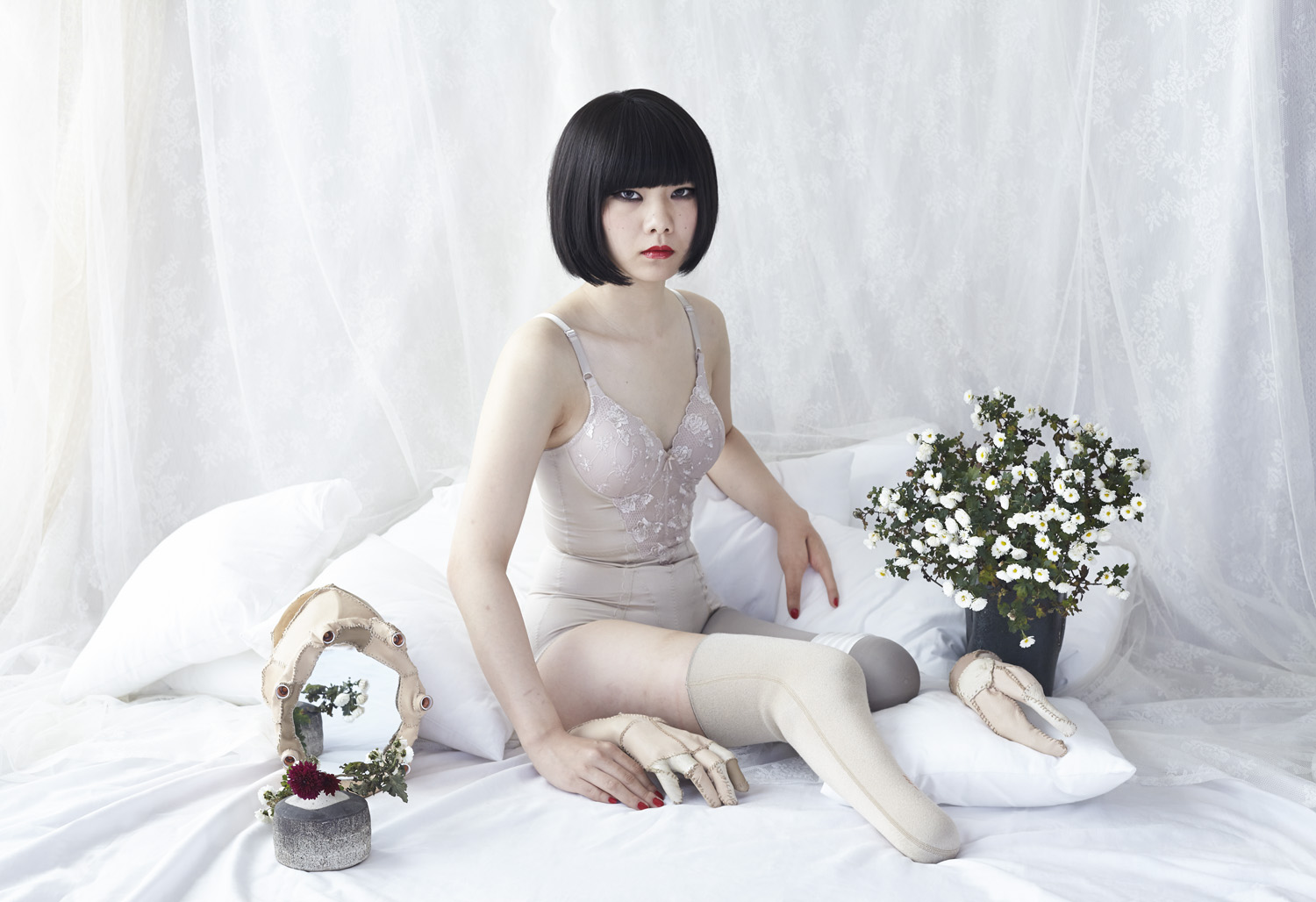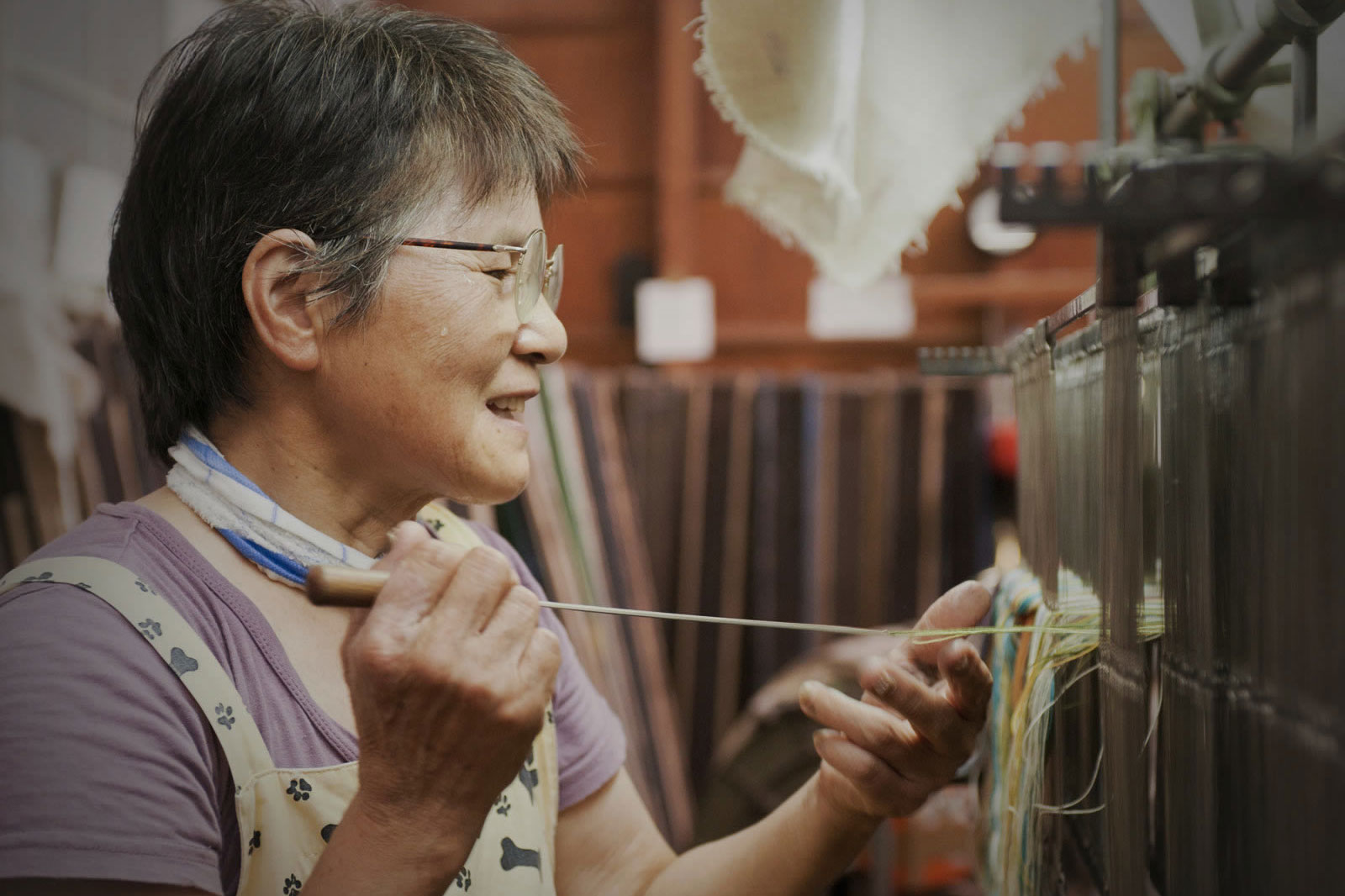Mari Katayama carries out her artistic activities on her two prosthetic legs. She was born with tibial hemimelia, a deficiency in which the major, larger leg bone is absent. As a result, both of her legs were amputated at age 9. Ever since, she has been expressing herself and her unique body’s connection with the surrounding world through her art pieces. With these works, she held her first solo exhibition entitled "you're mine."
Interview: Choosing High Heels with Amputated Legs / Artist, Mari KATAYAMA」
Copying the “Normal”
Since birth, Katayama was clubfooted with thin, curving legs. Until the amputation of her legs at 9 years old, she walked with orthosis. Now that her legs have been amputated, Katayama looks back at the days when she kept comparing her movements with those of others—movements that deviated from the “normal,” movements born from her body, which was not “normal.”
I never had ‘normal’ legs, so I couldn’t help but be interested in people’s movements and kept trying to imitate them. From the guy who drags his feet when he walks, to a woman’s clippety-clop walk. Bowlegged men too. I tried to copy all of their movements. I thought that if I was able to imitate all of them, I could become just like a normal person. I really hated how I walked differently from other people, so I thought I had to fix myself. Because of that, I was very interested in how other people took steps, how they walked, and how they ran, and I observed them to an extreme.
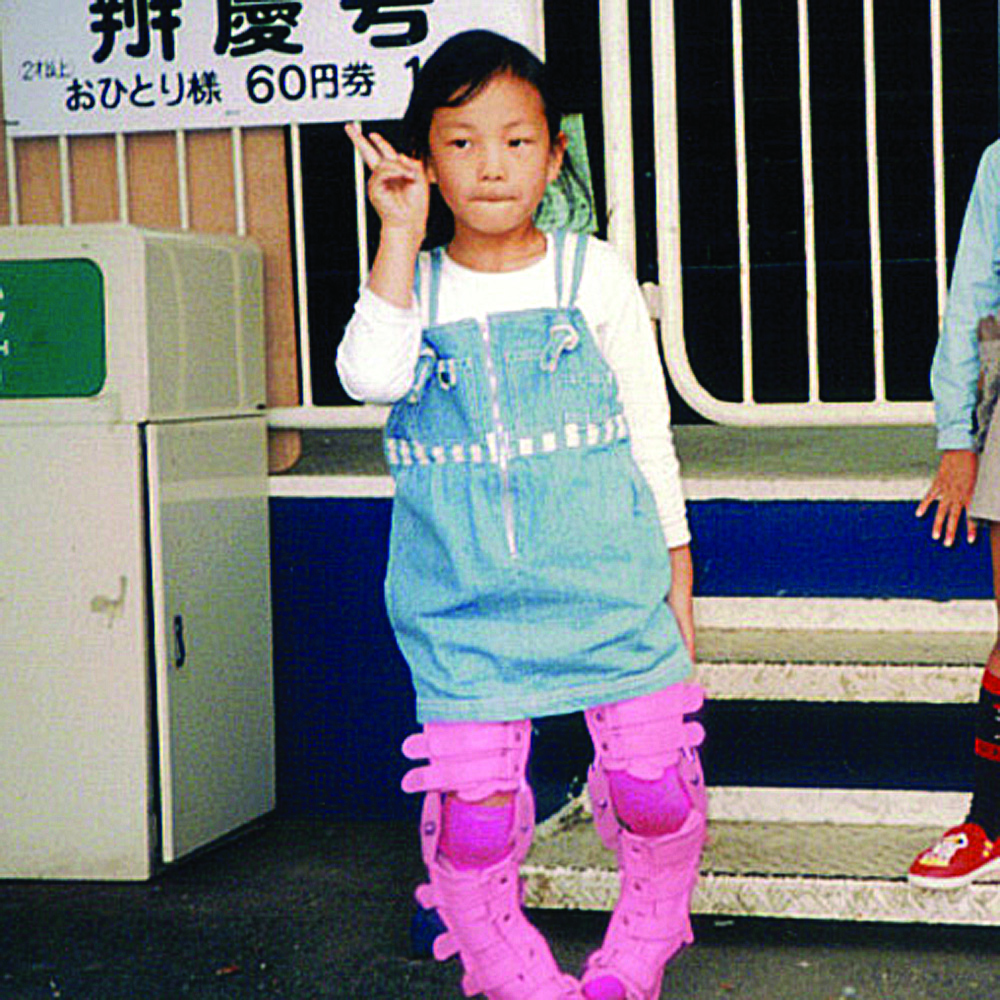
Mari in her orthosis.
Even now, she still remembers the senses from when she still had legs. Sometimes, she would feel a cramp in her legs despite them supposedly not being there anymore. Sometimes, she would also feel an itch at the back of her foot. Even though her prosthetic legs don’t have nerve connections, when she senses the force of her feet rising from the ground, she also feels the sense of the ground touching the soles of her feet. She can even recall senses she felt down to the tip of her toes.
Isn’t it strange? Since I still felt them, I couldn’t tell whether artificial legs can be considered part of the human body or not. There was a time I thought about that a lot. Since I couldn’t determine where my body began and ended; I was kind of tracing my body with objets-d’arts.
She tried reproducing her legs as they were before the amputation. She made a life-sized patchwork of herself with the legs she imagined and reproduced as they would have been had they not been cut off; she used her objet d’art as a means to trace and understand her body.
She originally started to take her self-portraits to show the objet d’art she made. People would not be able to grasp how large the objects were if they were shown by themselves. She thought she would become a mannequin and take the works into her hands in order to vividly show them.
→Next Page:Creating Social Faces to End Misconceptions About Life and Personality



